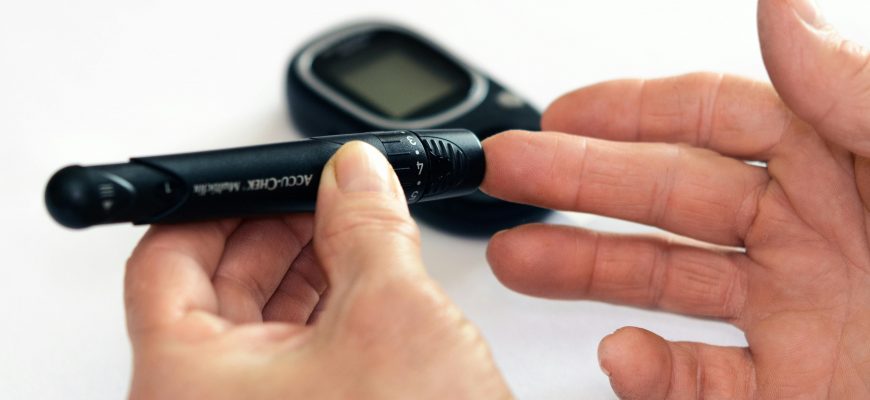
I. Introduction
In the dynamic landscape of diabetes management, the role of a blood glucose monitor extends far beyond its basic function of measuring blood sugar levels. For individuals living with diabetes, particularly in regions like Ontario and Saskatchewan where our partner pharmacies serve a diverse clientele, choosing the right glucose monitor can significantly influence daily health routines and overall quality of life. However, the criteria for selecting a glucose monitor often transcend the usual considerations of accuracy and cost. There is a nuanced aspect to this choice, shaped by evolving technology and the unique needs of users.
Traditionally, discussions around glucose monitors have centered on technical specifications and pricing. Yet, what often goes unspoken is the profound impact these devices have on the psychological well-being of users. The right glucose monitor not only offers reassurance through its readings but also supports a sense of control and autonomy in managing one’s health. This psychological comfort is crucial, as managing diabetes is not just a physical process but an emotional journey as well.
Another rarely discussed yet vital factor is the environmental footprint of these devices. As consumers become more environmentally conscious, the sustainability practices of manufacturers can influence purchasing decisions. This includes considerations like the materials used in the manufacture of glucose monitors, the longevity of the device, and the disposal methods for used test strips and lancets. An environmentally friendly glucose monitor not only appeals to the eco-conscious consumer but also aligns with broader societal shifts towards sustainable healthcare solutions.
Moreover, the integration of glucose monitors with digital health tools represents a frontier that is often glossed over in consumer guides. The capability of a monitor to seamlessly connect with mobile apps and health management platforms can transform it from a standalone device into a comprehensive health management tool. This integration empowers users to make more informed decisions, fosters better communication with healthcare providers, and enhances the overall management of diabetes.
In exploring these less conventional factors—psychological reassurance, environmental impact, and digital connectivity—we delve deeper into what it means to choose a glucose monitor in today’s world. These considerations not only cater to the practical needs of users but also resonate with their values, lifestyle, and long-term health objectives.
II. Accuracy and Reliability
The accuracy and reliability of blood glucose monitors are typically highlighted as paramount, yet the nuances of what constitutes these metrics are often under-discussed within the diabetes community. While most consumers are advised to look for devices with FDA approval or Health Canada certification, understanding the underlying principles that contribute to a monitor’s precision and dependability offers a more profound insight that can greatly affect diabetes management.
Overview of Accuracy in Glucose Monitors
Accuracy in glucose monitors isn’t solely about delivering a number close to a laboratory standard under ideal conditions; it’s about how the device performs in the varied and often imperfect conditions of everyday life. This includes fluctuations in temperature, humidity, and altitude—a rarely discussed topic that can significantly affect readings. For residents in Ontario and Saskatchewan, with their diverse climates, understanding how a device maintains accuracy in different environmental conditions is crucial. This knowledge empowers users to trust their device’s readings when making critical decisions about insulin dosages and dietary adjustments.
Factors Affecting Accuracy
One lesser-known factor impacting the accuracy of glucose monitors is the user’s hydration level. Dehydration, a common issue for those with diabetes, can lead to thicker blood, which in some cases might skew the glucose readings higher. This aspect is seldom covered in user manuals or product descriptions but is vital for understanding day-to-day variations in glucose levels.
Additionally, the hematocrit level, which is the proportion of red blood cells in the blood, can also affect readings. Most glucose monitors are calibrated for average hematocrit levels, but individuals with conditions that cause high or low hematocrit levels may find discrepancies in their glucose readings. Addressing this, some newer models have built-in adjustments for hematocrit variations, a feature that deserves more attention for its role in enhancing the accuracy of readings for a broader range of users.
By broadening the conversation around what impacts the accuracy and reliability of glucose monitors, we can provide users with a deeper understanding of how to select and use these devices more effectively. This insight not only aids in day-to-day diabetes management but also in long-term health planning, ensuring users can rely on their devices when they need them most.
III. Ease of Use and Accessibility
When discussing the ease of use and accessibility of glucose monitors, the conversation often gravitates towards basic functionalities like the size of the display or the number of buttons. However, a deeper exploration into what truly makes a glucose monitor user-friendly reveals aspects that significantly enhance the daily lives of individuals managing diabetes, particularly for those with varying abilities and lifestyles.
User-Friendly Features
A critical yet often overlooked aspect of user-friendliness in glucose monitors is the cognitive load required to operate the device. For a person with diabetes, particularly if they are elderly or dealing with other health issues, a glucose monitor that minimizes cognitive strain not only makes the process simpler but also safer. Features such as preset reminders for testing, straightforward menu systems, and clear, audible feedback can help reduce errors and enhance the independence of users.
Another innovative feature that is rarely discussed but increasingly important is the customization of the user interface. Some modern devices offer the ability to alter color schemes, text size, and even language, making them accessible to a broader range of users, including those with visual impairments or language barriers. This customization can dramatically improve the user experience and ensure that the device adapts to the user’s needs rather than the other way around.
Accessibility Considerations
The physical design of glucose monitors also plays a pivotal role in their accessibility. For individuals with limited dexterity, such as those with arthritis or neuropathy, traditional test strips and small buttons can pose a significant challenge. Devices that offer easy-insert test strips or touch screens can provide a more accessible solution. Moreover, the integration of voice-guided technology for users who are visually impaired remains an underrepresented feature in discussions about glucose monitor accessibility, yet it can profoundly impact usability for those individuals.
Considering these advanced yet critical features in glucose monitors goes beyond simple usability. It encompasses a comprehensive approach to accessibility, ensuring that every individual can manage their diabetes with confidence and independence. By focusing on these aspects, manufacturers and healthcare providers can truly cater to the needs of all users, making diabetes management more inclusive and effective.
V. Integration with Diabetes Management Tools
In the rapidly evolving landscape of diabetes care, the integration of glucose monitors with broader diabetes management tools represents a significant leap forward in how individuals manage their condition. While much focus is placed on the standalone functionality of these devices, their potential to enhance overall health management through connectivity and data sharing is a critical, yet often underexplored, aspect.
Connectivity with Health Systems
The capacity of glucose monitors to integrate seamlessly with electronic health records (EHRs) and other health management systems is a game-changing feature that deserves more spotlight. This connectivity allows for real-time data sharing between patients and healthcare providers, facilitating more personalized care plans and immediate adjustments in treatment strategies. It is especially beneficial for patients in remote or underserved areas, like some parts of Ontario and Saskatchewan, where direct access to endocrinologists or specialized diabetes care can be limited.
Furthermore, the integration with mobile health apps that track food intake, physical activity, and medication adherence creates a holistic view of a patient’s health. This interconnected data ecosystem not only helps in managing diabetes more effectively but also plays a crucial role in predicting and preventing potential complications before they become acute.
Data Management Capabilities
Another seldom-discussed yet vital feature of modern glucose monitors is their advanced data management capabilities. The ability to analyze trends over time and generate comprehensive reports can transform routine glucose data into actionable insights. For instance, sophisticated algorithms can detect patterns of glycemic variability that might go unnoticed with traditional monitoring methods, offering early warnings of potential hypoglycemic or hyperglycemic events.
These features, coupled with user-friendly data visualization tools, empower patients to take an active role in their health management. They also facilitate more informed discussions during healthcare appointments, making each interaction more efficient and focused on results.
Exploring these advanced technological integrations in glucose monitors not only provides patients with a powerful tool for daily management but also aligns with broader health initiatives aimed at reducing the long-term impacts of diabetes. By fostering a better understanding of these capabilities, we can help users make informed decisions about their device choices, leading to improved health outcomes and enhanced quality of life.
VI. Customer Support and Education
Effective customer support and comprehensive educational resources are pillars of optimal diabetes management, yet they are often overlooked in discussions about glucose monitors. The availability and quality of these services can profoundly influence the user experience and the overall effectiveness of diabetes management strategies.
Availability of Support
While many manufacturers provide basic customer support, the depth and accessibility of this support are crucial for users, especially when they encounter issues with their devices or need guidance on using new features. For instance, support services that are available 24/7, including holidays and weekends, can make a significant difference for a user who needs immediate help. Moreover, support offered in multiple languages can cater to a diverse user base, ensuring that all patients have access to help when needed, regardless of their primary language.
Another seldom-discussed aspect of customer support is the integration of peer support communities. Manufacturers that facilitate or link users to diabetes support groups provide an invaluable resource, where users can share experiences, tips, and emotional support. These communities often provide practical advice that is rooted in real-world experiences, complementing the technical support provided by manufacturers and healthcare providers.
Educational Resources
The role of educational resources in enhancing the effectiveness of glucose monitoring cannot be overstated. Comprehensive educational materials that go beyond simple device instructions, covering broader topics such as lifestyle adjustments, recognizing the signs of hypo- or hyperglycemia, and advanced carb counting techniques, can significantly enhance a patient’s confidence and competence in managing their diabetes.
In addition, innovative educational tools like virtual tutorials, interactive webinars, and even augmented reality (AR) applications that simulate real-life scenarios can transform a user’s learning experience. These methods cater to different learning styles and can be particularly effective in helping new users familiarize themselves with their devices quickly and thoroughly.
By investing in robust customer support and innovative educational resources, manufacturers can not only enhance user satisfaction and retention but also contribute to better health outcomes. This holistic approach to customer engagement ensures that users are not only equipped with the tools but also the knowledge and support needed to manage their diabetes effectively.
VII. Conclusion
As we conclude our exploration into the essential aspects that consumers should consider when selecting a glucose monitor, it becomes clear that the decision transcends mere technical specifications or cost considerations. Choosing the right glucose monitor is fundamentally about enhancing the quality of life and achieving optimal diabetes management. This process involves a deep understanding of personal needs, technological advancements, and the support systems that accompany a device.
The journey through the nuances of accuracy and reliability, the significance of user-friendly features and accessibility, the comprehensive evaluation of cost-effectiveness, and the integration with broader diabetes management tools underscores a holistic approach to selecting a glucose monitor. Moreover, the importance of robust customer support and detailed educational resources further enriches this decision-making landscape.
In today’s world, where technology and healthcare are increasingly intertwined, the choice of a glucose monitor should align not only with the immediate needs of managing blood sugar levels but also with long-term health goals and lifestyle preferences. It’s crucial for consumers to consider how a monitor will fit into their daily routines, interact with other devices they use, and support their overall health objectives.
As individuals living with diabetes, especially those in Ontario and Saskatchewan, continue to navigate their health journeys, they are encouraged to use the insights provided in this discussion as a foundation for making informed choices about their glucose monitoring devices. By considering these broader and often less discussed aspects, consumers can select a device that not only meets their medical needs but also enhances their life quality.
Lastly, the evolution of glucose monitoring technology promises even more integrated, intuitive, and inclusive solutions in the future. Staying informed about these advancements will enable individuals with diabetes to continue to find new ways to manage their condition effectively and with greater ease. This ongoing commitment to education and adaptation is essential for living well with diabetes.
As we navigate the complexities of diabetes management, the choice of a glucose monitor becomes a cornerstone of daily health care. This guide has equipped you with a deeper understanding of what to look for beyond the standard features, emphasizing the importance of accuracy, ease of use, cost-effectiveness, integration capabilities, and comprehensive support systems. Now, it’s your turn to take the next steps in enhancing your diabetes management journey.
- Visit Partner Pharmacies: Start by visiting our partner pharmacies in Ontario and Saskatchewan. Here, you can see the various models of glucose monitors firsthand, and discuss with pharmacists who understand the nuances of each device. They can provide personalized recommendations based on your specific health needs and lifestyle.
- Consult with Healthcare Providers: Engage with your healthcare provider to discuss how different glucose monitors might integrate into your current health management plan. Their professional insights can help you understand how a new device could improve your diabetes control and overall health outcomes.
- Explore Online Resources: Take advantage of the wealth of information available online. Visit manufacturer websites, watch tutorial videos, and read user reviews to see how different monitors perform in real-world scenarios. This research will help you make an informed decision based on a wide range of experiences and expert opinions.
- Engage in Community Forums: Join online forums and social media groups where people with diabetes share their experiences and tips. Learning from the community can provide real-world insights into how different glucose monitors work in everyday settings.
- Stay Informed About Advances: The field of diabetes care is constantly evolving. Subscribe to newsletters from diabetes health sites and stay connected with updates on the latest technological advancements in glucose monitoring. This ongoing education will help you stay ahead in managing your diabetes effectively.










